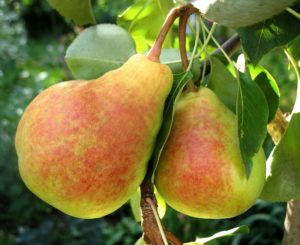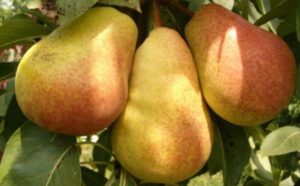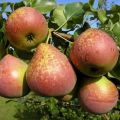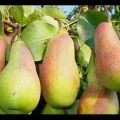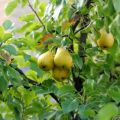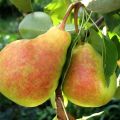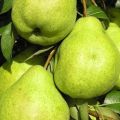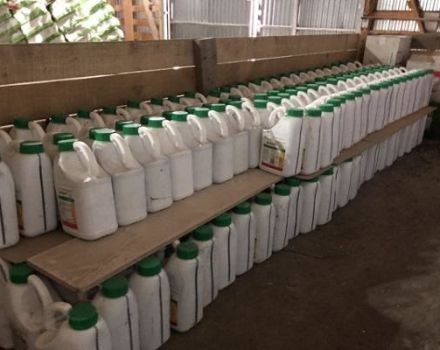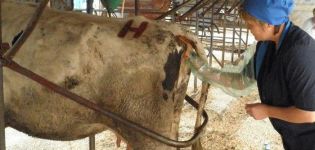Description and characteristics of the Veles pear variety, planting and care
Gardeners who grow pears look for varieties that meet the needs and wishes of the family. Veles pears have a lot of advantages, thanks to which they are favorites in some gardens.
Description and full characteristics of the variety
A summer resident, before planting a plant, seeks to obtain more useful information. To do this, he studies the description of the variety, and based on the information received, makes a choice in favor of the species.
Pollination of the Veles variety
The partially self-fertile species of Veles pear needs to be grown in the neighborhood of pollinating varieties. The plant copes with pollination on its own, but it is still better to have several other trees in the garden that will help increase yields.
Pollinating varieties
Summer residents recommend planting varieties together:
- Voskresenskaya Large;
- Simply Maria;
- Rogneda;
- Chizhovskaya;
- Severyanka.
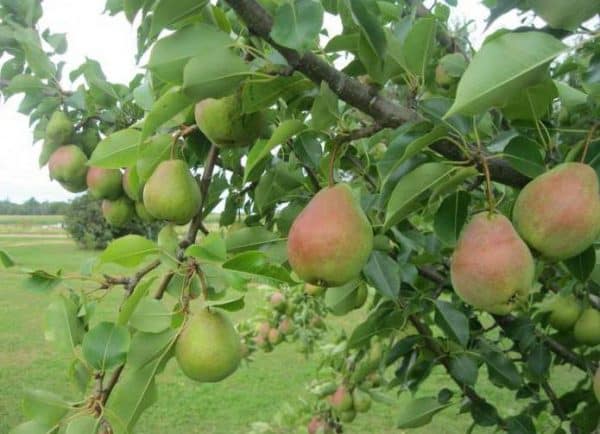
The presence of trees in the garden that bloom at the same time with the Veles pear increases the yield at times.
Tree height
The tree reaches its maximum height by the age of 10. Then the size of the culture is 4 m.The crown is a little drooping, so in the spring during flowering, the pear will decorate any garden plot.The summer resident himself adjusts the height of an adult plant, forming the crown in any suitable way.
Life span
The variety was bred recently, so it is not yet possible to reliably say about its lifespan. Growers make the assumption that the tree will have the same lifespan as other varieties of the crop.

Winter hardiness
High frost resistance, the variety is grown in the Moscow region. The tree can easily endure harsh winters.
Yield
Fruit weight 150-250 g, it all depends on the care of the plants. Compliance with agricultural techniques and planting subtleties allows you to get a consistently high yield of pears every year. One tree produces 12 to 25 kg of fruit.
The more abundant the harvest, the finer the fruits are formed. To increase the weight of the fruit, regulating pruning is carried out.
Cyclic fruiting
With proper care, the tree bears fruit without interruption.There is no particular cyclical formation of the ovary and ripening of fruits.
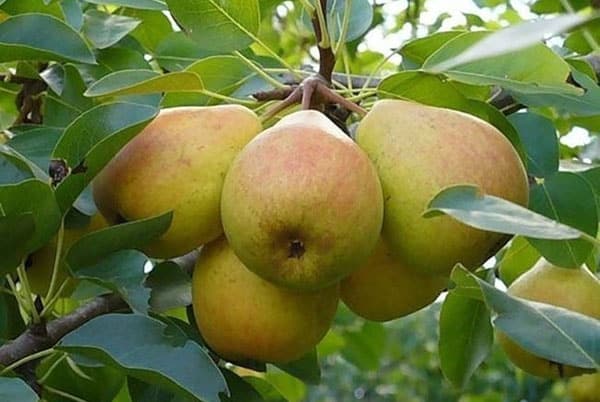
Self-fertility
Pear Veles is partially self-fertile. If there are no other varieties of pears nearby, there will be fruits, but their number is insignificant.
Disease resistance
The tree is immune to crop diseases. But gardeners do not neglect standard prevention techniques.
Advantages and disadvantages of Veles pear
The variety has positive and negative characteristics. The summer resident gets acquainted with this information even before landing.
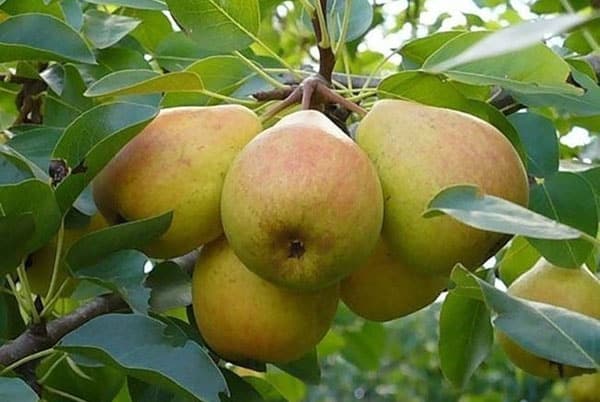
Pros:
- universality of use;
- undemanding care;
- annual, stable harvest;
- the ability to bear fruit in unstable climatic conditions;
- stored for a long time;
- resistance to disease.
Minuses:
- does not tolerate drought;
- fruits become smaller with abundant fruiting;
- the beginning of fruiting occurs in the 7th year after planting.
These characteristics of the plant help the summer resident make the right choice.
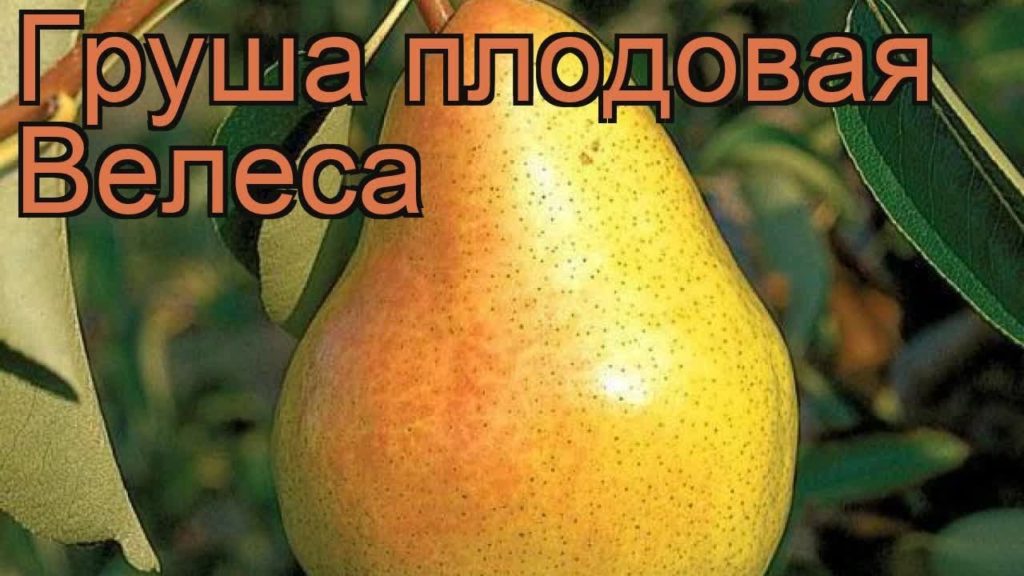
Reproduction methods
You want to breed a good variety on your own. The summer resident needs to determine what is the best way to reproduce. There are several common methods; the summer resident himself has the right to choose the right one.
Cuttings
A common method used by many summer residents. The stalk is grafted onto a strong stock, and the tree acquires improved characteristics. Cuttings are cut in advance, take the middle part of the shoot. 3-4 leaves are left on the segments. The lower one is immediately cut off. The upper end of the cutting is cut exactly, the lower end at an angle.
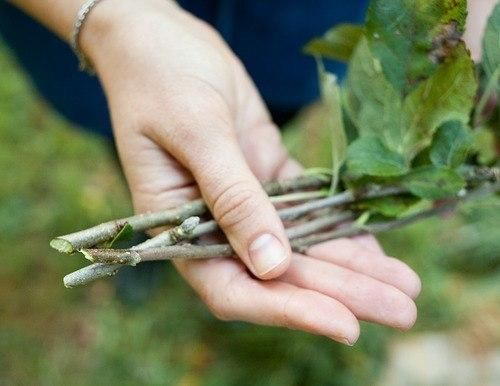
The harvested planting material is stuck 2-3 cm into the fertile soil and the condition of the leaves is monitored. If they wither, then the seedling will not work. Such a cutting is thrown away immediately, allowing the rest to grow.
When the root system begins to develop actively, the stalk turns green, the resulting planting material is transplanted to a permanent place.
Layers
The second most popular way of breeding fruit trees. It is necessary to dig in a growth or a low-growing branch. Wait until it gives roots, separate it from the mother tree and plant in a permanent place.

How to plant a plant correctly
Planting is an important part of growing a fruit tree. It is necessary to follow a lot of subtleties and recommendations of experienced summer residents. Then you will be able to avoid common mistakes and get the declared yield.
How to choose a seedling
What kind of tree will grow in the future depends on what kind of planting material is used for growing.
Sapling requirements:
- healthy root system;
- intact stems;
- absence of signs of deformation and diseases on the planting material.
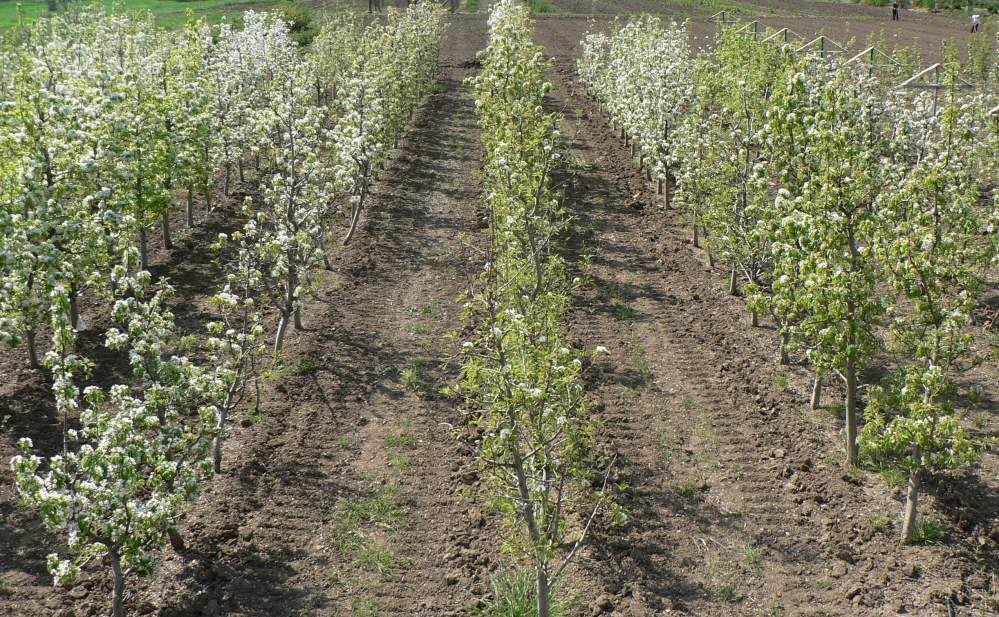
A seedling is chosen at 2-3 years of age. Such plants are easier to accept and quickly adapt to new conditions.
Choosing a place and time for boarding
The area for growing pears is chosen on the sunny side. The culture does not tolerate the close occurrence of groundwater. It is advisable to choose a fertile soil. Fertilize if necessary. Pickup times vary by region. It is recommended to spend it in the spring. So the seedling has a better chance of surviving the winter.
Planted before the start of sap flow, until mid-April. If it is grown in the fall, then the period should be calculated so that the tree is well rooted before the first frost.
Digging a landing hole
They do this in advance, dig a hole 1 m deep, 70-80 cm wide. The bottom is filled with fertile soil mixed with peat, humus, river sand and mineral fertilizers.
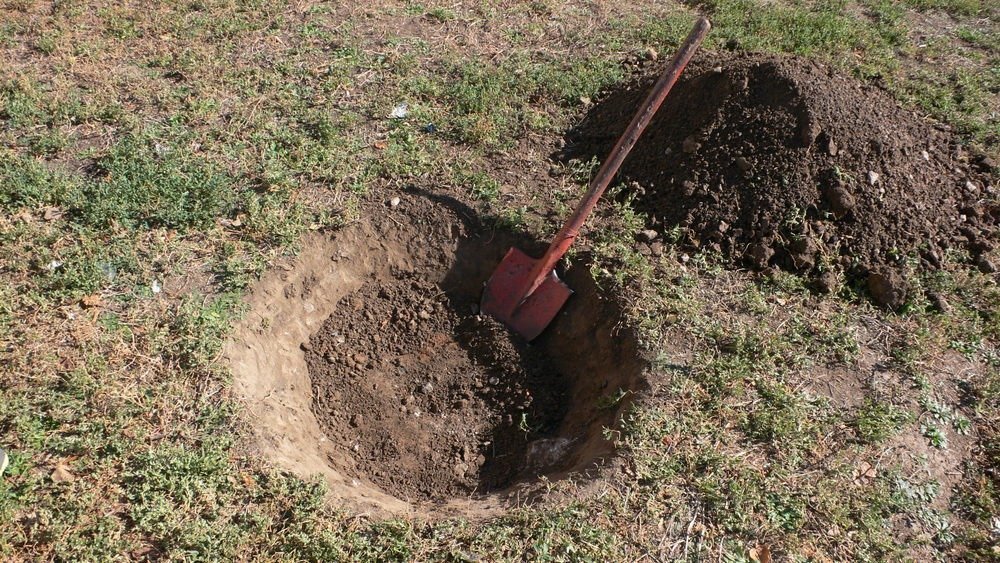
Pear planting technology
A small mound is formed in the landing pit. A seedling is placed on it and carefully sprinkled with earth. Periodically, the tree is lifted, allowing the root system to expand. Place the pear so that the root collar rises 5-7 cm above the ground.
After planting is complete, the trunk circle is abundantly watered and mulched with dry rotted residues.
Caring for Velesa
No matter how correctly the tree is planted, without proper care the declared harvest will not be. It is necessary to comply with the norms of watering, feeding and other agricultural techniques.
Irrigation intensity
The Veles pear needs abundant, regular watering. Especially during periods of drought. Young plants are watered once a week, adults once every 3-4 weeks.With a lack of moisture, the ovary crumbles. This leads to crop loss.After watering, it is advisable to loosen the trunk circle. This helps fight weeds and provides oxygen to the roots.
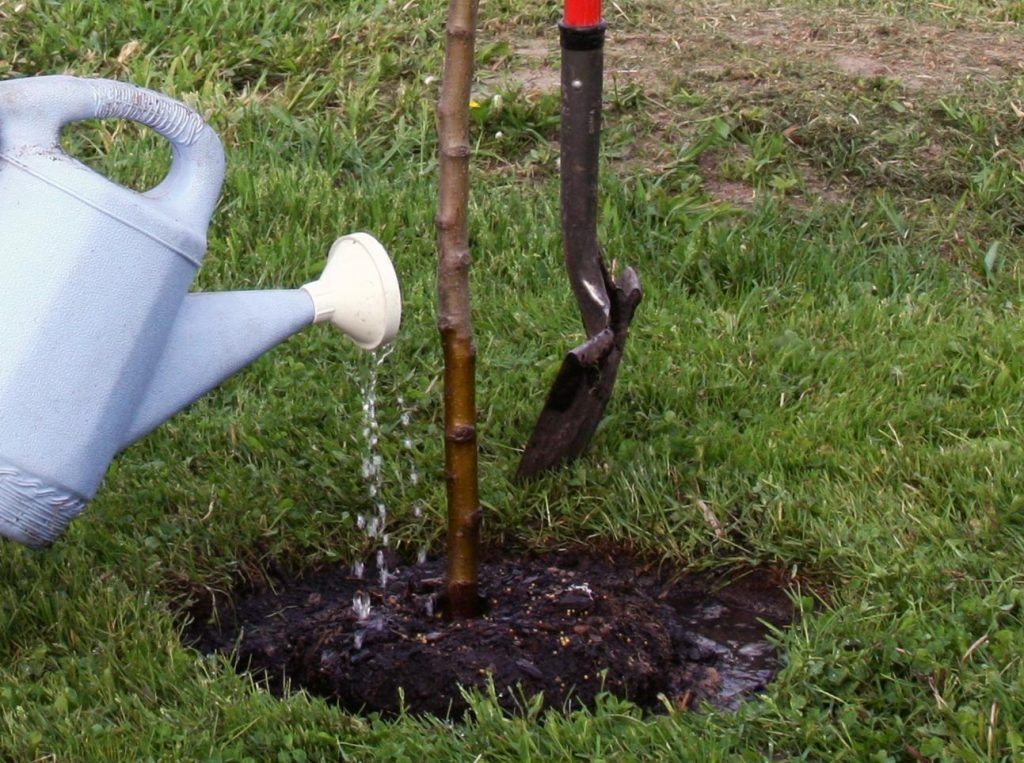
Top dressing
For the first 2-3 years, the pear does not need additional feeding. The fertilizers applied during planting are consumed by the plant during this time. From the age of 4, organic fertilizers are applied in spring and autumn, mullein infusion during fruiting. Also complex mineral fertilizers with which pears are fed in the intervals between the introduction of organic dressings.
Trimming
Correct pruning will help preserve the crop and prevent the plants from getting sick. There are several types of pruning that summer residents carry out annually.
Crown formation
It is recommended to use the trimming method - the improved bowl. There will be no difficulties in forming by this method. The pear will get enough light and air. The fruits are developing correctly. There are only 3 skeletal branches, the rest are side shoots.
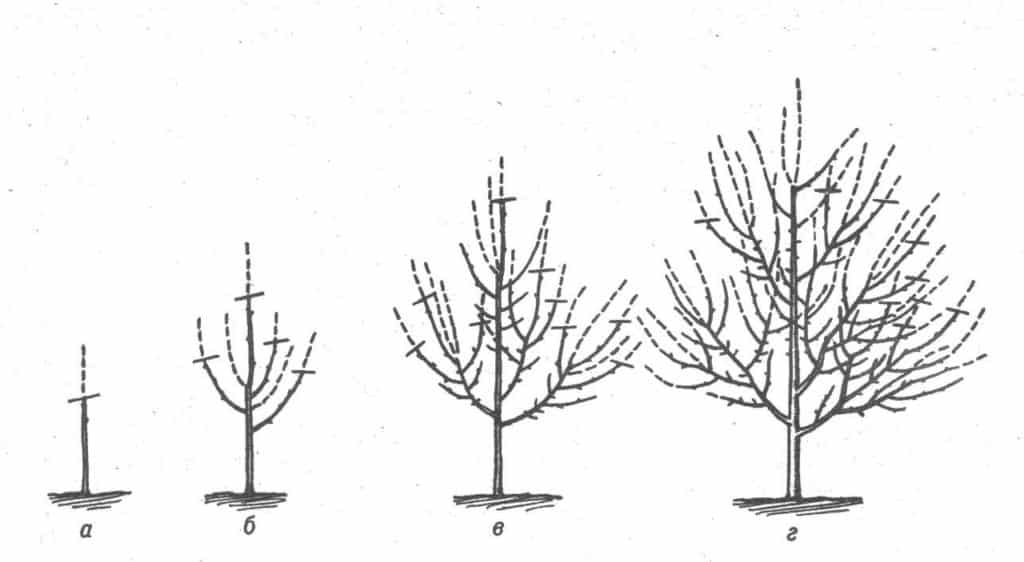
Regulatory
With this pruning method, the summer resident regulates the thickening of the crown. By removing branches that grow inward or improperly, in early spring.
Supportive
Shortening of young shoots. Pruning is carried out in the summer. Shoots are cut 5-10 cm from the beginning of the branch.
Sanitary
Such pruning is carried out during the entire growing season. All dry, diseased and damaged branches are removed from the tree.
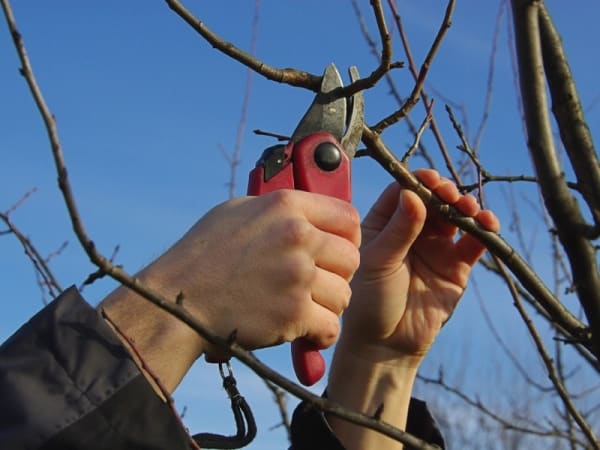
Trimming rules
It is not enough to just cut the branches off the tree. In order not to harm, it is recommended to observe certain subtleties:
- sharpen and process the tool before starting;
- do not leave hemp;
- process large sections with garden pitch.
Following simple rules will help preserve the tree and the harvest.
Preparing for winter
In advance, the Veles pear is watered and fertilized. Then cover the trunk circle with mulch, and the trunk with roofing material. If necessary, in winter, they are additionally covered with snow. They are guided by weather conditions.
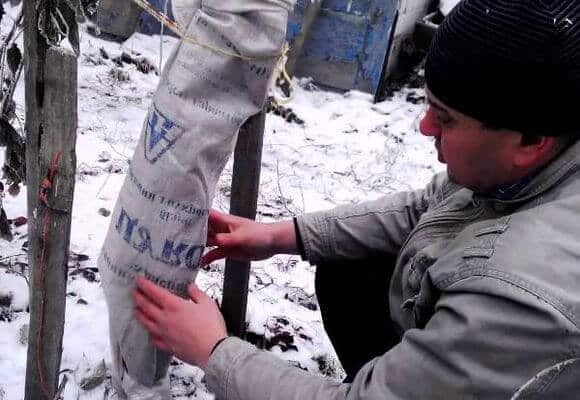
Diseases and pests
A high degree of wood stability is noted. But summer residents do not neglect the annual treatment for diseases.
Typical diseases of pears and measures to combat them
The culture is characterized by fungal diseases. Summer residents, without waiting for the development of diseases, treat plants with fungicides and other chemical preparations.
Prevention works better than cure. For this, gardeners put in order the land plots:
- remove foliage;
- collect plant residues;
- everything is burned or taken far outside the house;
- make top dressing and spray with drugs.
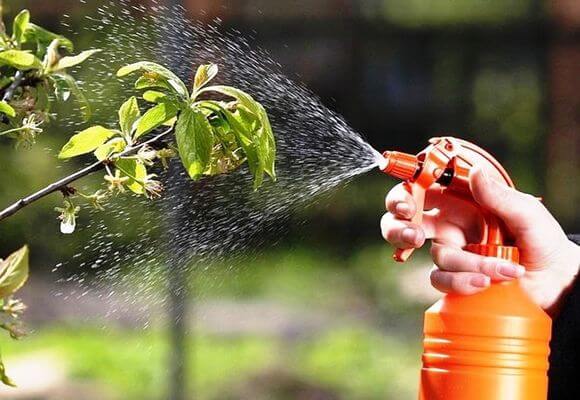
In addition to processing, weeding, loosening, mulching is a good prevention.
Insect pests and how to control them
Many insects seek to feast on the fruits from the tree. Summer residents set traps, treat with special preparations.
Ripening period and harvest
Pears ripen differently in each region. Determines the degree of readiness of the fruit of the summer resident in appearance. Collect pears carefully, sorting out with high quality and placing them in wooden containers.
What regions is the variety more adapted to
Initially, the variety was adapted to the conditions of the Moscow region. Then it spread to other areas. Due to the high degree of frost resistance, summer residents are experimenting with planting varieties in regions with risky farming.Since the species is still young, there is little research data. Growing a Veles pear will not cause trouble for its owners. You only need to follow simple requirements, the plant will thank you with the volume of the harvest.
